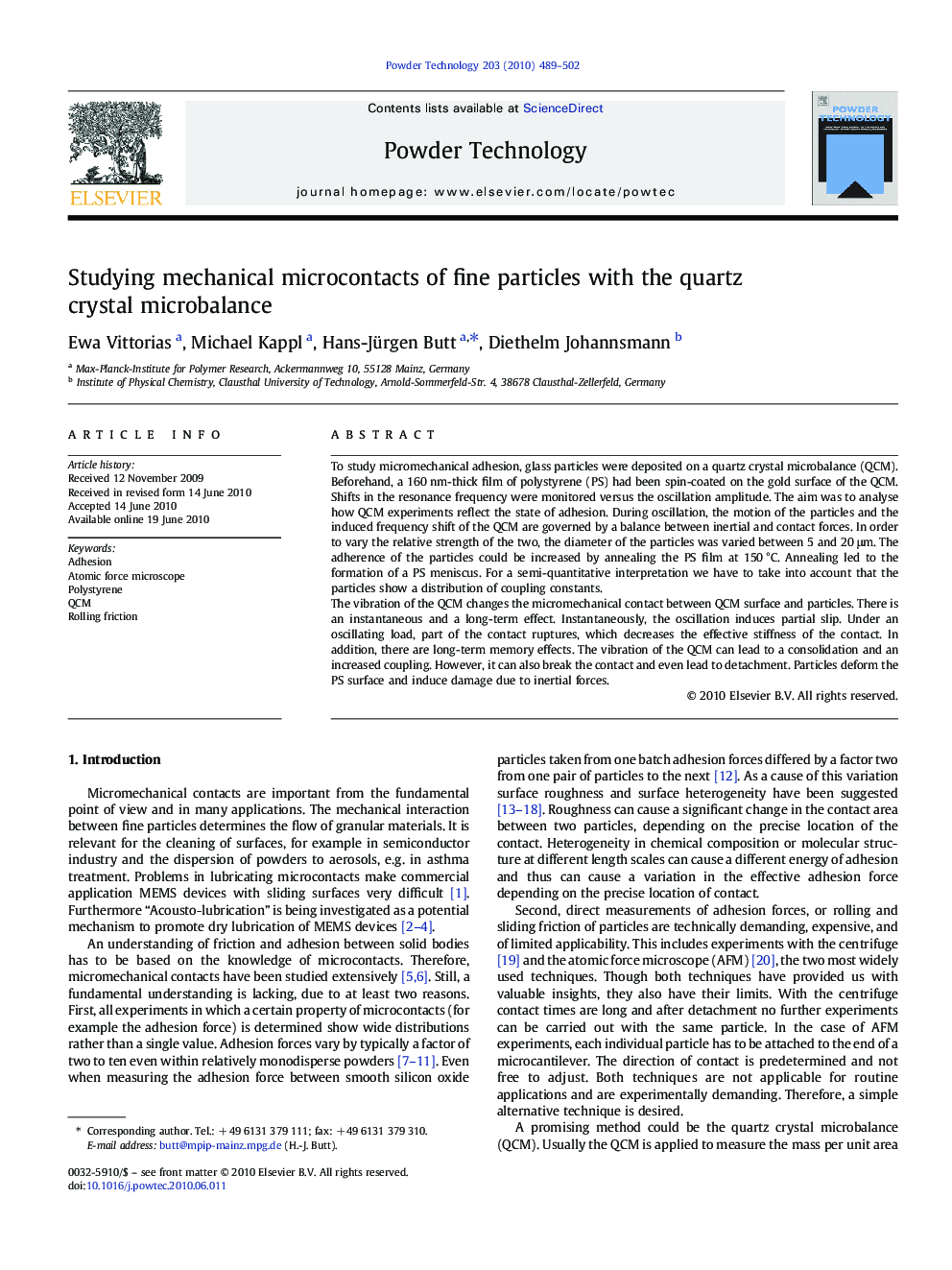| Article ID | Journal | Published Year | Pages | File Type |
|---|---|---|---|---|
| 237783 | Powder Technology | 2010 | 14 Pages |
To study micromechanical adhesion, glass particles were deposited on a quartz crystal microbalance (QCM). Beforehand, a 160 nm-thick film of polystyrene (PS) had been spin-coated on the gold surface of the QCM. Shifts in the resonance frequency were monitored versus the oscillation amplitude. The aim was to analyse how QCM experiments reflect the state of adhesion. During oscillation, the motion of the particles and the induced frequency shift of the QCM are governed by a balance between inertial and contact forces. In order to vary the relative strength of the two, the diameter of the particles was varied between 5 and 20 μm. The adherence of the particles could be increased by annealing the PS film at 150 °C. Annealing led to the formation of a PS meniscus. For a semi-quantitative interpretation we have to take into account that the particles show a distribution of coupling constants.The vibration of the QCM changes the micromechanical contact between QCM surface and particles. There is an instantaneous and a long-term effect. Instantaneously, the oscillation induces partial slip. Under an oscillating load, part of the contact ruptures, which decreases the effective stiffness of the contact. In addition, there are long-term memory effects. The vibration of the QCM can lead to a consolidation and an increased coupling. However, it can also break the contact and even lead to detachment. Particles deform the PS surface and induce damage due to inertial forces.
Graphical abstractTo study micromechanical adhesion, particles of different size (R = 2.5–10 μm) were deposited on a quartz crystal microbalance (QCM). Adhesion was varied by coating the surface of the QCM. From the shift in resonance frequency, information on the interaction between particles and the surface of the QCM is provided.Figure optionsDownload full-size imageDownload as PowerPoint slide
